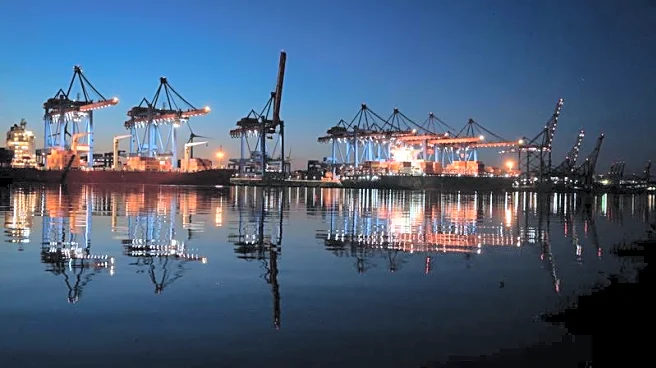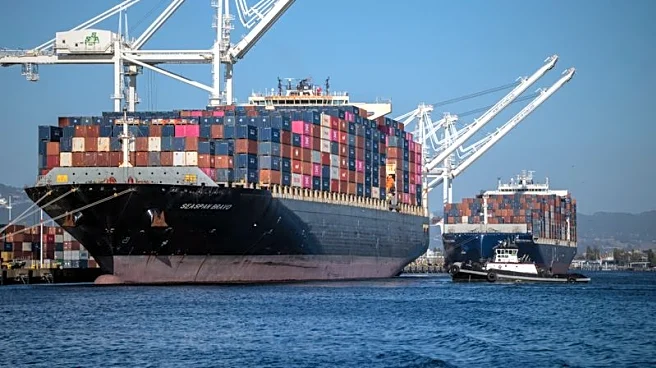What's Happening?
S&P Global is expected to maintain Italy's credit rating at 'BBB+' with a stable outlook, despite recent improvements in public finances. Italy's budget deficit is projected to fall to 3% of GDP this year, but growth prospects are clouded by the negative impact of U.S. tariffs, which are estimated to reduce GDP by 0.5% in 2026. While Fitch recently upgraded Italy's rating, S&P may prefer to wait for more data before making a decision. Italy's downgraded growth forecasts and the impact of tariffs highlight the challenges faced by the euro zone's third-largest economy.
Why It's Important?
Italy's credit rating and economic outlook are significant for the euro zone and global financial markets. The impact of U.S. tariffs on Italy's economy underscores the interconnectedness of international trade policies and domestic economic conditions. A stable credit rating is crucial for Italy's borrowing costs and investor confidence. The decision by S&P Global will be closely watched by other rating agencies, which may influence Italy's future economic prospects and fiscal policies.
What's Next?
S&P Global's review will be followed by assessments from DBRS, Scope Ratings, and Moody's, which may provide further insights into Italy's economic outlook. Italy's government is hopeful for positive news from these agencies, which could support its fiscal policies and economic recovery efforts. The ongoing impact of U.S. tariffs and Italy's growth challenges will continue to be key factors in future rating decisions.
Beyond the Headlines
The broader implications of Italy's credit rating and economic challenges include potential shifts in euro zone economic policies and trade relations. The impact of U.S. tariffs highlights the complexities of global trade dynamics and their influence on national economies. Italy's efforts to improve its fiscal position may serve as a model for other euro zone countries facing similar challenges.











